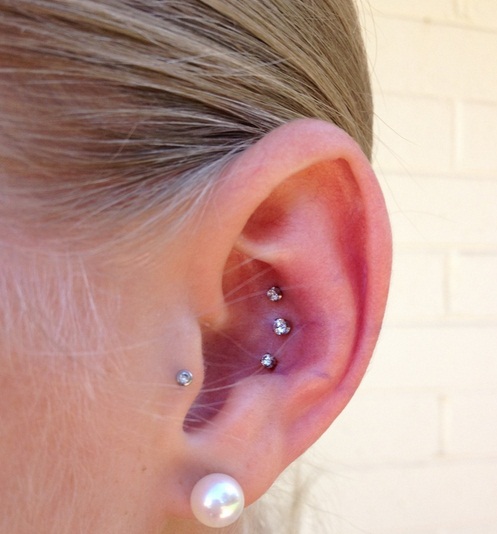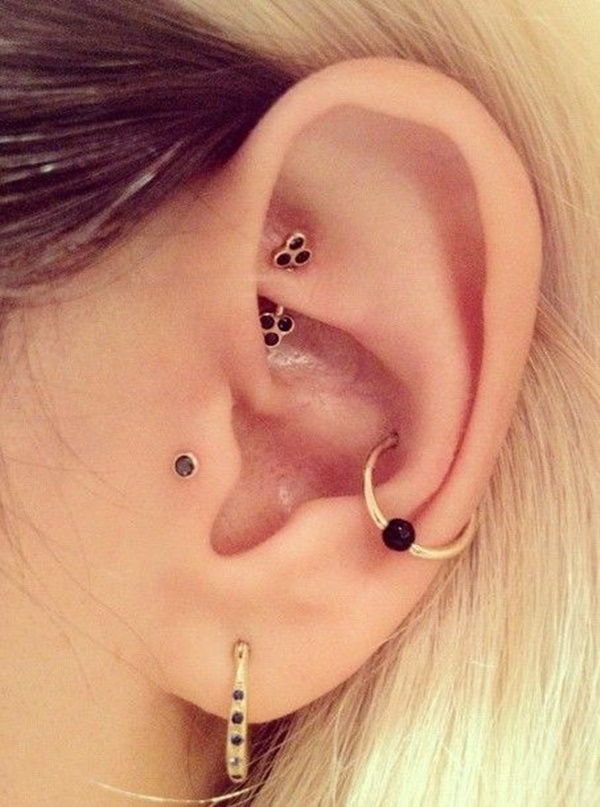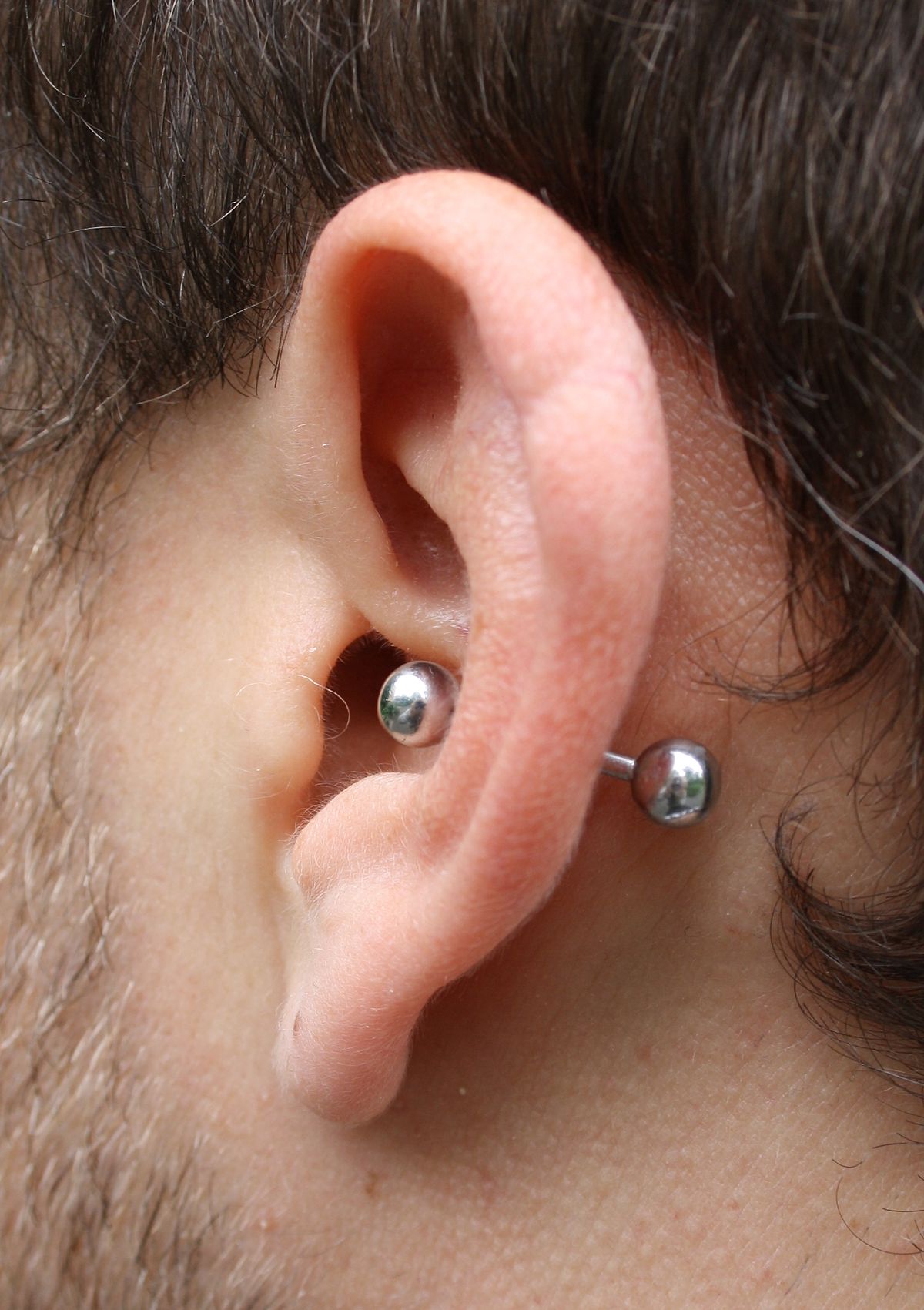If you already have your earlobes pierced and you’re thinking about getting an edgy new piercing, you may want to consider getting a conch piercing. This is a piercing done in the cartilage of the middle portion of the ear. It’s so named because this part of the ear looks somewhat like a conch shell. You can get an inner or outer conch piercing. Inner refers to the lower part of the ear and outer refers to the upper section.
While conch piercings are extremely trendy, there are a few things you need to know before getting it done. We have compiled a guide with all the information that you need to know.

SOURCE: ASKIDEAS.COM
WHAT YOU SHOULD EXPECT
You may be a little nervous about getting this piercing but once you choose a reputable piercer there is no need to fear. The individual will clean your ear then mark the area which you both agree will be pierced. He or she will then insert the piercing needle. Once it goes through the cartilage, the piercer will then insert the jewelry. Your ear will be disinfected and you will be provided with aftercare instructions to keep infections at bay.
If you’re getting the standard sized piercing, the pain will not be much worse that than caused by a lobe piercing. If you want a bigger hole for jewelry with a larger gauge, your piercer may use a dermal punch instead of a regular needle. Since more cartilage is being removed, the pain is likely to increase.
HOW PAINFUL IS IT?
Any piercing comes with some pain, however, it all depends on the individual and how tolerant they are to pain. Some people might find it more painful than others but the pain is definitely worth it.
As previously mentioned, if you opt for a larger hole then the pain will be more severe. This is mainly because of the dermal punch which is used to pierce the ear. When the piercer uses a dermal punch a larger portion of the cartilage is removed and this could sound quite scary.
You may experience some bleeding with a conch piercing if you opt for a dermal punch. This is because the hole is considerably larger and also, a chunk of cartilage is removed from the ear.
WILL IT HURT WHEN YOU SLEEP?
Conch piercing might look cute, but they’re no joke when you’re trying to sleep. Adding pressure on the ear can be uncomfortable, especially when the piercing isn’t healed. Also, sleeping on an ear piercing can prolong healing time and can cause some irritation. It’s best to avoid sleeping on the side of the piercing until it’s completely healed.
REGULAR PIERCING VS DERMAL PUNCH
Now that we’ve discussed the pain levels of both the piercing methods, which one would be best for you? Well, the answer is quite simple. If you want something eccentric and bold then a dermal punch piercing is the way to go. However, this piercing will leave you with a large hole in your ear if you ever decide to remove the jewelry.
On the other hand, a regular piercing can actually be more worthwhile if you’re uncertain. This is a huge pro, especially if you decide that you no longer want to have a conch piercing. The hole can easily close after some time, making it less of a commitment.
Our advice would be to start out with a regular needle piercing before getting a large conch piercing. Once you’re absolutely sure that a larger hole is what you want then you can go in at a later stage to change it up.
COST OF CONCH PIERCINGS
The cost of a conch piercing can vary depending on your location and how experienced your piercer is. However, needle piercings generally range between $45 and $80. Dermal punches can cost a little more. While you don’t want to spend more than you need to, it may be worth it to pay a little extra for an experienced professional. They would be more qualified to both perform the piercing and advise you on how to care for it. They may also go the extra mile in ensuring that proper hygiene is maintained. The last thing you want is a cheap piercing that leads to infection.
HOW TO CARE FOR A CONCH PIERCING
Your piercer should give you all the information you need about aftercare but you may want to prepare beforehand. All you should really need are sea salt and cotton balls or Q-tips. Gauze may also come in handy in case you bleed a lot. Salt water is the best healing aid for piercings. Mix the salt in hot water and let it cool to a comfortable temperature. Use your cotton ball to soak up some of the water and hold it to your ear. You should treat your piercing in this way for about five minutes twice a day. You can also buy a prepared aftercare spray if you don’t want to mix your own salt water.
THE HEALING PROCESS

SOURCE: PIERCEMEUP.COM
Because the piercing goes through cartilage and not just skin, it generally takes a long time to heal. Expect the process to take from six months to a full year. If you contract an infection it would be even longer, so you want to ensure the area stays clean. Pay special attention to excessive pain and any redness, discharge or fever associated with the conch piercing site since this probably means you have an infection. Generally maintaining good health can make the recovery smoother. Eat well and get your rest so your immune system to can do its work.
AFTERCARE
In order for any piercing to heal, aftercare is an important step that shouldn’t be skipped. There are a bunch of different products on the market that can speed up healing. However, you might want to try some salt water that you can easily mix up at home.
Add a teaspoon of salt to a half a cup of water and stir until the all the salt has completely dissolved. Next, use a cotton pad or a Q-tip and drench it in the saltwater mixture. This treatment will help clean out the piercing and prevent any infection. It’s best to do this two or three times a day until the piercing has completely healed.
JEWELRY OPTIONS
You will need to keep the original conch piercing in for about two months or longer. When it’s time to change it, you can choose from a range of options including hoops, barbells, and studs. Make sure your new earring is not too heavy as this could prevent the piercing from healing properly. Follow the advice of your piercer on this. You can opt for nickel-free earrings and other metals which don’t usually cause allergic reactions. Don’t use cheap jewelry which will tarnish.
Conch piercings can really add some extra edge to your look so if you want one, go for it! Just remember to choose your piercer carefully and to follow their instructions closely.
WOULD A CONCH PIERCING SUIT YOU & SHOULD YOU GET ONE?
Depending on your personal preference and your style, a conch piercing might be a great way to modify your body. It’s a great accessory and can instantly transform any look. It’s easy to wear no matter what your style might be.
If you’re still not sold on the idea of getting one then it’s best to do some extra research. Look up a few different piercings and contemplate if it’s what you want. The best thing about getting a piercing is that you can instantly remove it if you’re unhappy with how it looks. Just make sure not to get a large conch piercing, because the hole will not close.

SOURCE: WIKIPEDIA.COM